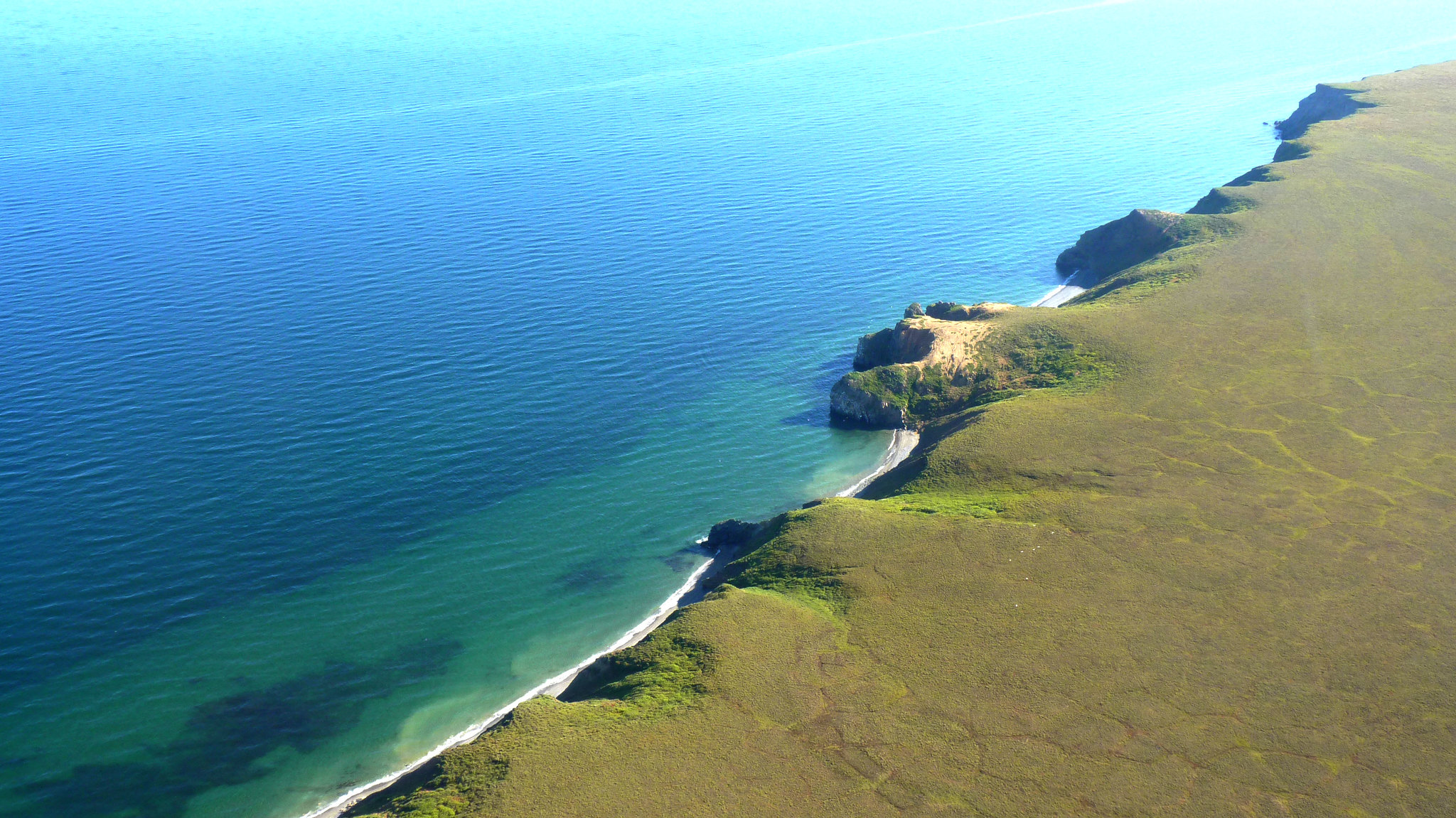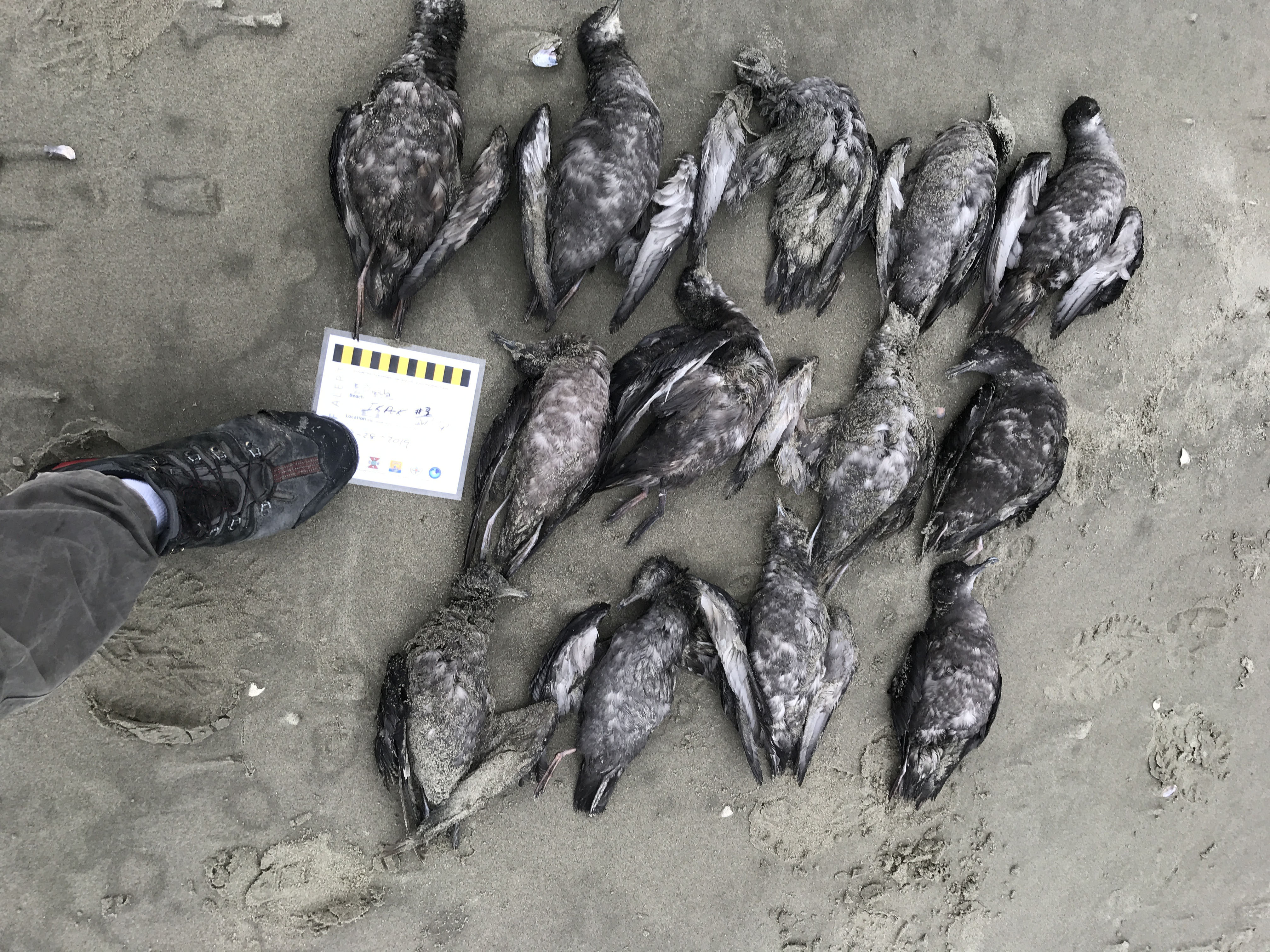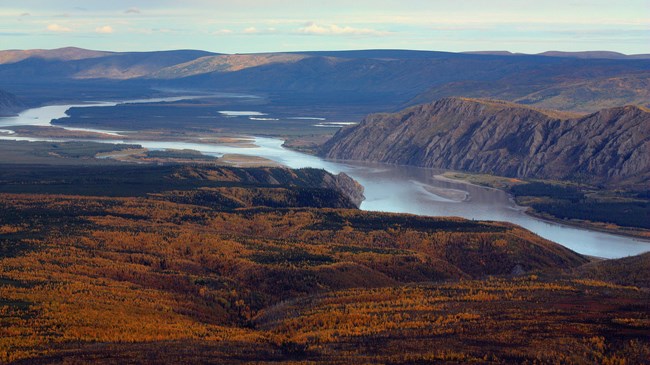Warmer waters, animal die-offs and toxic blooms are among the signs that a ‘new Arctic’ is here
In the Bering and Chukchi seas, changes have been dramatic.

Temperatures in the northern Bering Sea and in the Chukchi Sea waters directly to its north spiked in 2019 to levels higher than those forecast for after 2040. Boreal species like Pacific cod and pollock have swarmed into Arctic waters. Hazardous algal blooms have proliferated. Large numbers of seabirds died, apparently from lack of food.
All these events from the past few years, and especially a super-heated 2019, raise an important question, said Ed Farley of the National Oceanic and Atmospheric Administration, raises an important question: “Are we now seeing the new Arctic?”
[Why the Bering Sea is a hotspot of climate change — and a sentinel for rest of the world]
Farley, of NOAA’s Alaska Fisheries Science Center, spoke at last week’s Alaska Marine Science Symposium in Anchorage. He ran down the findings of the Arctic Integrated Ecosystem Research Program, a project coordinated by the North Pacific Research Board that combines efforts of scientists from multiple agencies and institutions. The program sent research cruises into the Bering Strait region and the Chukchi Sea starting in 2017, and cruises are scheduled through next year.
In that region, on the edge of the Pacific Arctic, the changes have been dramatic in recent years, including the loss of ice even in winter, extremely warm water temperatures and a cascade of effects.
Scientists have detected changes from the ecosystem’s microscopic level to the level of huge marine animals, Farley said
Tests of waters in the northern Bering and southern Chukchi seas so far have found a shift in copepods, the tiny crustaceans at the bottom of the food web. There was a sharp drop-off in the abundance of large, fat-filled copepods, the tiny creatures, and a proliferation of the smaller, lower-fat copepods, Farley said.
“That’s important because large copepods have a lot of lipids, a lot of fat,” he said. The shift is bad news for far-north species such as Arctic cod that depend on high-fat food. And it is benefiting the northward-moving boreal species. In 2019, there was a “full-on onslaught” of young pollock in territory that used to be dominated by Arctic cod, he said.

Moving up the food web, the scientists saw other signs of warming. There encountered masses of masses of dead seabirds — with starvation as the apparent cause, possibly complicated by the emergence of algal toxins. And the changes went all the way up to the large whales, some of which were detected swimming west of the Bering Strait’s St. Lawrence Island in the early winter. Those whales migrate south in the fall, so the region along St. Lawrence Island is much farther north than their usual early winter grounds.
Signs of change extend into freshwater rivers, other research shows.
It used to be that the problem of overheated river waters, with temperatures soaring too high for salmon to survive, was considered a strictly south-of-the-Arctic problem.
That is no longer the case, based on research from the Yukon River — and based on observations at rivers elsewhere, reported Vanessa von Biela of the U.S. Geological Survey’s Alaska Science Center.
One of the world’s major northern rivers, the Yukon flows about 2,000 miles from Llewellyn Glacier in northern British Columbia to the Bering Sea coast of Alaska. The high-fat salmon in the river is considered a premium product in commercial markets, salmon are critical foods for Indigenous communities along the river in both Alaska and Canada. But recently, Yukon River salmon runs have faltered.
For years, the concern was that Yukon River salmon were encountering problems during the years they spend in the ocean, Von Biela said in her presentation at the Alaska Marine Science Symposium. But now there are signs that at least some of the problems are in the river, she said.

Work by Von Biela and her colleagues found that water temperatures of 18 Celsius are enough to cause heat stress in salmon and that temperature threshold is commonly reached in key parts of the Yukon during the migration back to spawning grounds.
At some Alaska spots along the river in 2016 and 2017, most of the sampled salmon showed signs of heat stress, Von Biela reported. Additionally, lab tests revealed that at temperatures of 21 degrees Celsius, heat stress in salmon becomes obvious and sometimes fatal, she said. About half their test subjects put in waters that warm died, she said.
Last summer, events in the real world apparently replicated the lab tests. During Alaska’s record-warm July, there were mass die-offs of returning but pre-spawned salmon, with heat stress identified as the likely cause. Those die-offs extended into the northern tributaries of the Yukon River and into the Bering Strait region.
Those events are a troubling sign, and serve notice that managers need to consider more than simple numbers of fish returning to spawning grounds, Von Biela said.
The deaths in the river seem tragic for fish that had survived years in the ocean and escaped predators and fishermen’s nets, she said.
“When you think of how much these guys have gone through, to die at this stage in their life is really bad for the population,” she said. “They die right at the finish line.”